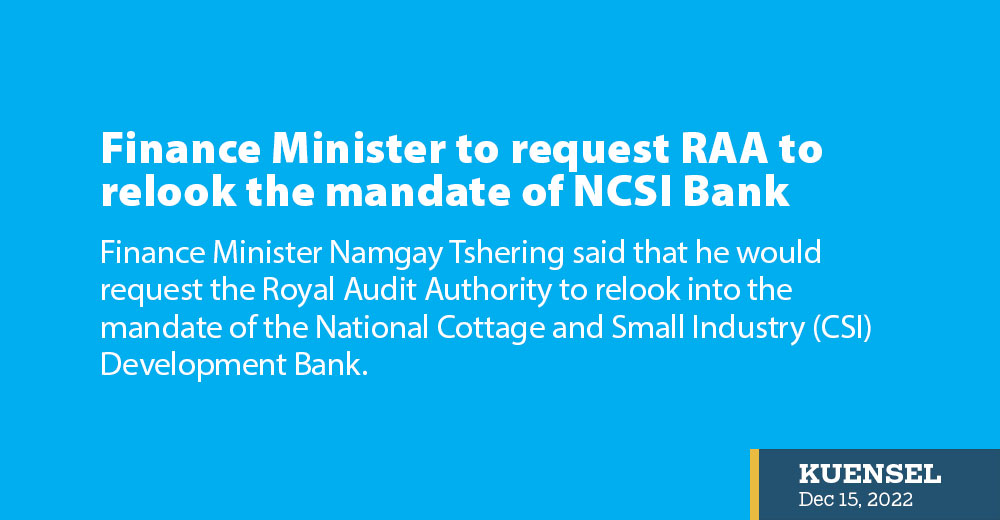Thukten Zangpo
Finance Minister Namgay Tshering said that he would request the Royal Audit Authority to relook into the mandate of the National Cottage and Small Industry (CSI) Development Bank.
“Not only superficially but to deep-dive into it,” Lyonpo said, adding that what matters most is the impact the bank has made.
The comments have come at the back of the Royal Audit Authority’s latest Annual Report 2021-22 which asks the finance ministry to reassess the relevance of the bank. The RAA stated that the bank’s function overlaps with the Bhutan Development Bank Limited (BDBL).
The ministry was also asked to initiate appropriate intervention to address it to curtail the avoidable and unwarranted cost centres.
The report added that the bank had incurred consecutive losses since its inception and depended heavily on the government’s equity injection. “The bank was not even able to cover the operating cost.”
The bank incurred a total loss of Nu 43.7 million (M) in 2021 and Nu 64.31M in 2020, according to the bank’s annual report in 2021.
As a non-deposit-taking bank, Lyonpo said that there would be operational inefficiency because the only source of revenue is through interest generated from lending. “Interest rates are highly subsidised being a policy development bank,” he said. “Not that the government is trying to protect the image of the bank because we started it.”
The audit report also stated that most of the loan products are similar to what is offered by the BDBL. Besides, the loan disbursement and equated monthly instalment collections are also routed through the BDBL.
“This did not add any value to the loan life cycle but instead increased the administrative cost. The bank has effectively been a cost centre,” the report stated.
As directed by the Royal Monetary Authority, the bank had temporarily suspended disbursing loans since May this year. The bank’s non-performing loans (NPL) were above the central bank’s threshold of 5 percent.
In 2021, the bank’s NPL was reported at Nu 335.71M which constituted 15.2 percent of the total loans. The NPL decreased to 11 percent in March this year and 9 percent in June this year. The highest NPL was in the agriculture sector.
Inadequacies in loan appraisals and follow-up contributed to the NPLs, the report stated. The NPLs are loan repayments that are overdue by 91 days.
Since the bank’s inception in 2020, loans amounting to Nu 2.24 billion have been disbursed to 6,525 clients.
The highest loans were for the livestock sector worth Nu 832.71M, followed by the agriculture sector with Nu 667.88M, and Nu 415.28M in manufacturing and production.


